Unforgettable encounter in Mammals Part II
It is generally considered that there are more deer in Britain today than in the Middle Ages, a fact that is almost certainly true. There is also a greater variety of deer living here today than there were four or five hundred years ago, for along with our native Roe and Red Deer, we also have large populations of Fallow, Sika, Reeves’s Muntjac and Chinese Water Deer. The Fallow has been present in Britain for many hundreds of years, but the Sika, Muntjac and Chinese Water Deer are relatively recent arrivals.
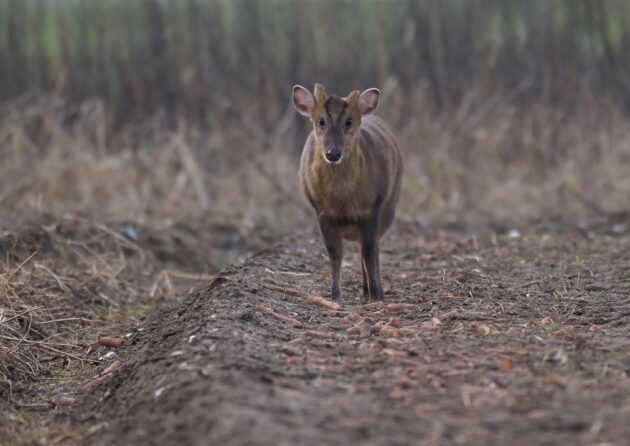
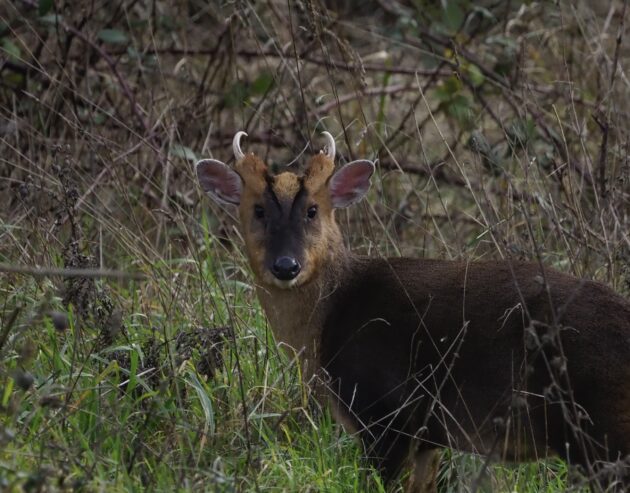
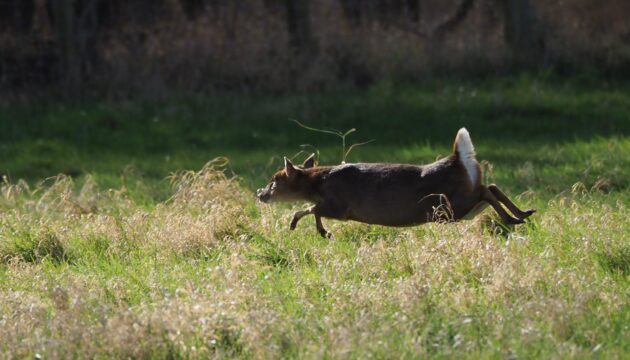
I see the Muntjac on almost every birding (or dog-walking) outing, as these small Asian deer are now abundant around my home in the Suffolk Brecks. The Muntjac of England are all descended from a small number of animals released by the 11th Duke of Bedford in his park at Woburn, in Bedfordshire, in the early years of the 20th century. The first escapes from the park occurred in 1922, and over the next 50 years they slowly established themselves in the counties of central England. In recent years, the population has exploded, and now there are many thousands, possibly tens of thousands, of these little deer in England. They have reached Wales, as they speed towards Scotland.
Like many non-native species, they have had an adverse effect on their environment. They are low-level browsers, destroying the favored nesting habitat of Nightingales, a rare bird on the northern edge of its range here in England. As a result, Nightingales have completely disappeared from many forests where they were once found, and the population continues to decline as Muntjac numbers increase. Muntjac venison is very good to eat, but despite this, not many are shot. Instead, more people die in car crashes.
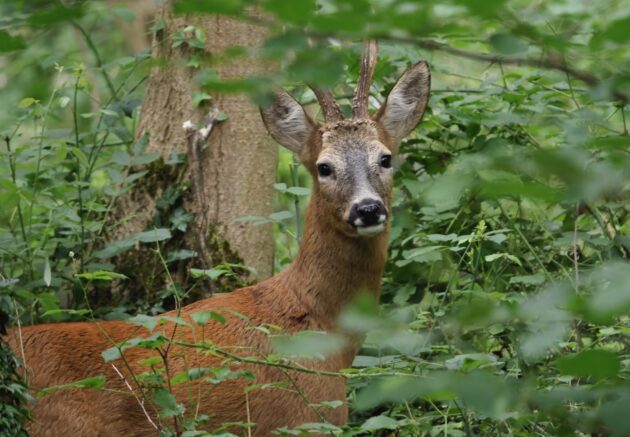
Of all our deer, my favorite is the Roe, a beautiful and charming species. This is a common mammal in the countryside around my home, and I see them often. There is also a strong (and growing) population of Red Deer, though I encounter them less often. There are no Sika in my region, but the Chinese Water Deer continue to expand their range and I see them regularly now.
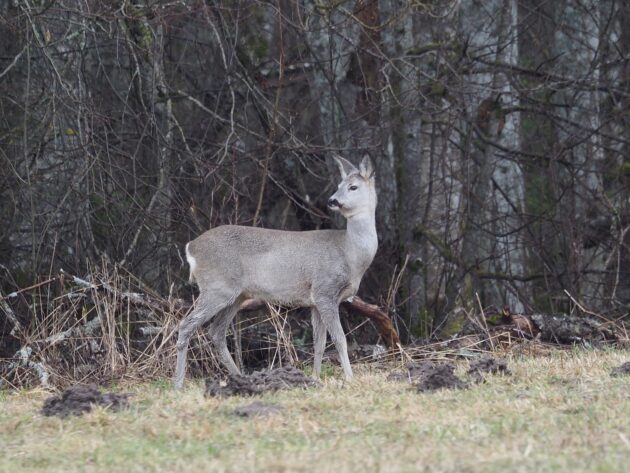
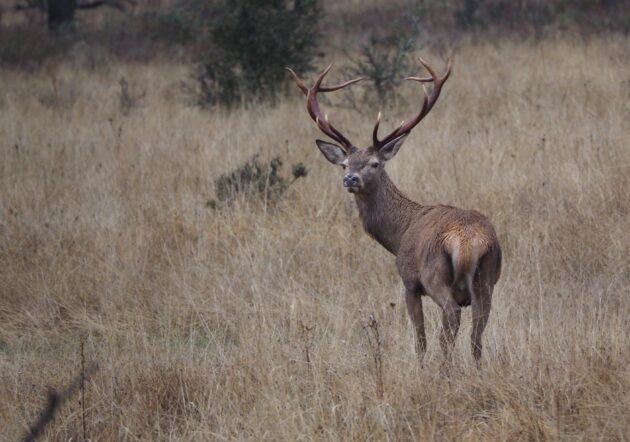
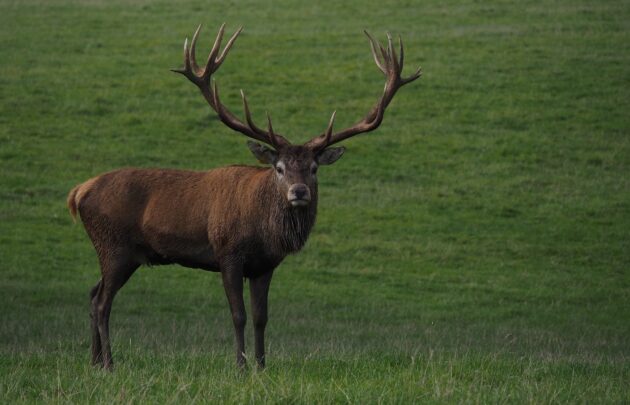
When birding abroad, I have seen Roe in many different countries, from France to Greece. I have also encountered Red Deer in almost many countries. The Spanish stag shown here was photographed by me in the Parque Nacional de Caberñeros in central Spain. I saw a number of mature stags during my visit to the area, and all had similar unique and attractive antlers. The only place (outside of England) where I have seen wild Fallow Deer in Europe is in the Coto Doñana of Spain, where they are plentiful.
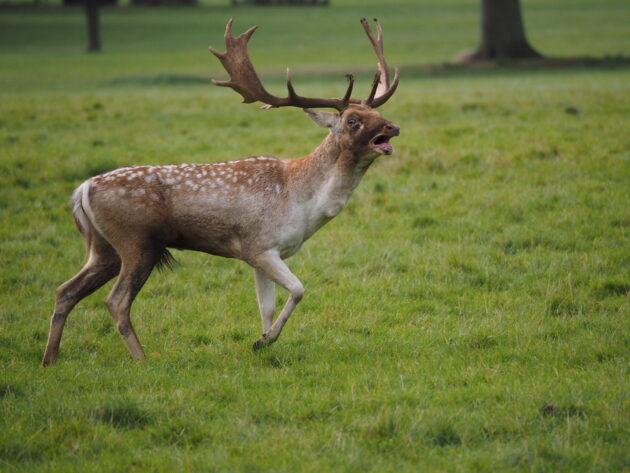
Elk (or what the Americans call Moose) I have encountered several times in Scandinavia, Estonia and Poland. The largest species of deer in the world, they are strangely ugly but magnificent animals. I just saw the European Bison in Poland, in the Bialoweiza Forest. On one occasion, I went out at 4 am on a May morning because my guide had promised to show me a small herd of Bison grazing outside the forest. We were watching them earlier when the farmer whose land they were grazing scared them back into the forest with fire-crackers. He complained that they were eating the grass he wanted for his horses. It would make more financial sense for him to build a shelter for observing and photographing Bison, and charge tourists for the privilege of using it.
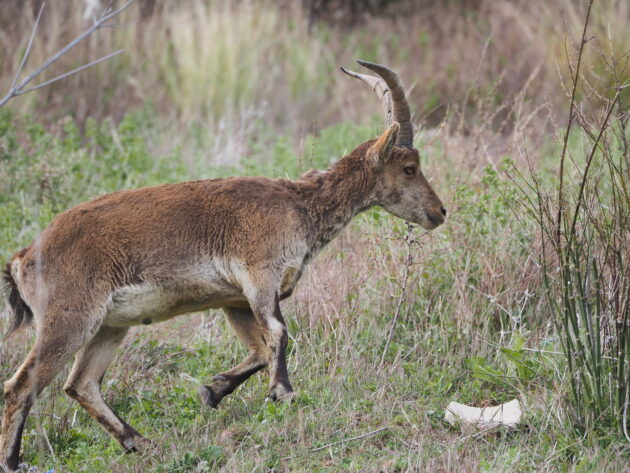
According to my mammal guide, there are two species of chamois in Europe, the Pyrenean Chamois (which also occurs in Central Italy), and the Alpine Chamois. I’ve seen both (usually when looking for Lammergeiers or Alpine Accentors), but have yet to get a decent photo of either. I have also seen ibex several times: an easy place to see Spanish Ibex is in the Sierra de Grazelema Natural Park; I have seen flocks of the larger but similar Eastern Tur while looking for Snowcock in Georgia’s Caucasus Mountains.
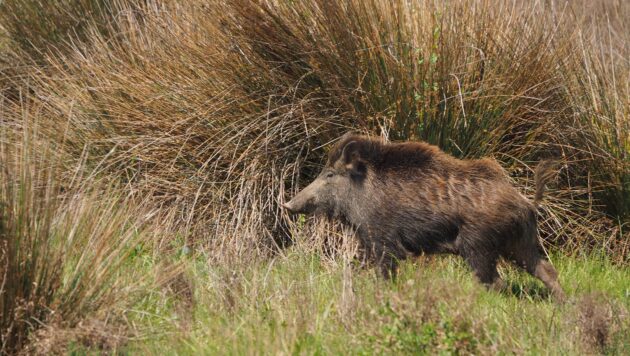
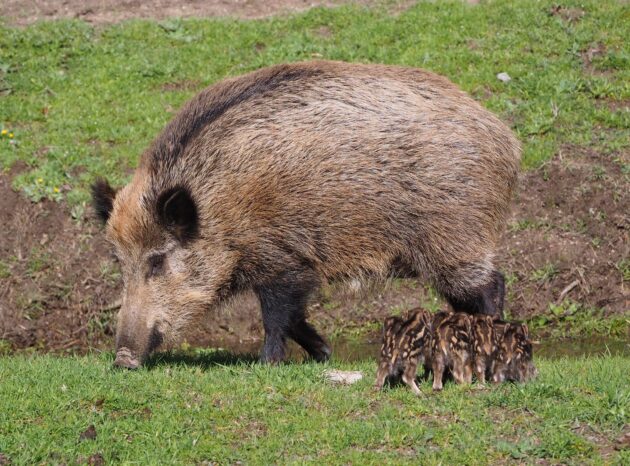
I saw my first Wild Boar in Spain’s Coto Doñana many years ago, although I have since seen them in many other countries as well. Here in the UK they were wiped out 400 years ago, but in recent years they have been re-established as a result of escapees from farms. There is a growing re-wild movement in this country, but whether we really want the Wild Boar to return is a different matter, as the reintroduced animals are not popular with the people who live next to them. This is not an animal you want in your garden, or meet on a road at night.
Another extinct mammal in the UK that has now been re-established here due to reintroduction is the European Beaver. I have yet to see one in the UK, but I had a memorable encounter with one while birding from a small boat on a river in Lithuania. My lasting impression was how big the animal was. I have seen many Nutria (we call them Coypu) in Europe, where this animal is widespread in South America. They used to be well established in East England, too, but a determined trapping operation successfully wiped them out of the country 40 years ago. Successful removal of a well-introduced animal is rare, but this proves that it can be done.
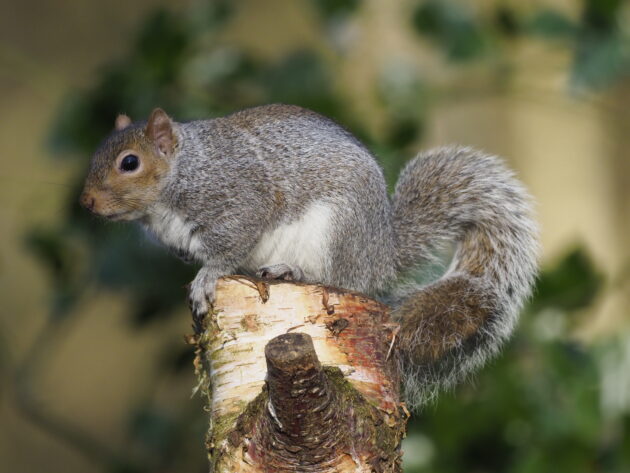
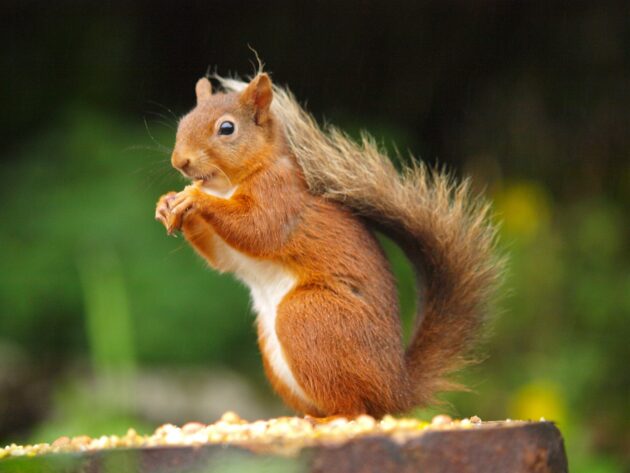
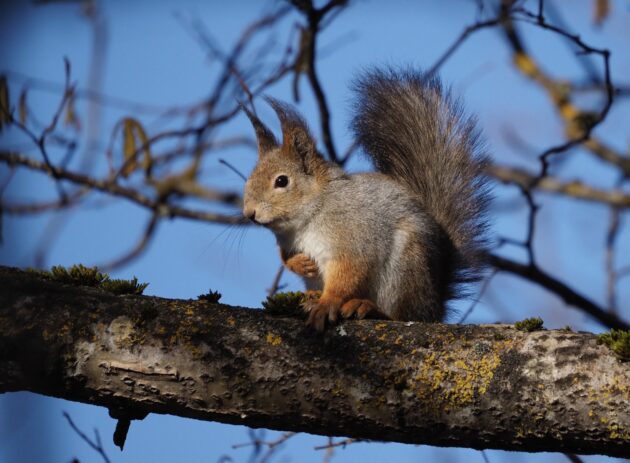
One introduced animal that we are unlikely to eradicate from Britain is the North American Gray Squirrel, a mammal that I see almost every day. First released in Britain 150 years ago, they largely displaced the native Red Squirrel. I am old enough to see wild Red Squirrels in my home county of Suffolk, but they died out here 40 years ago. I always enjoy watching them when I see them in Europe: the individual above was in Estonia in March.
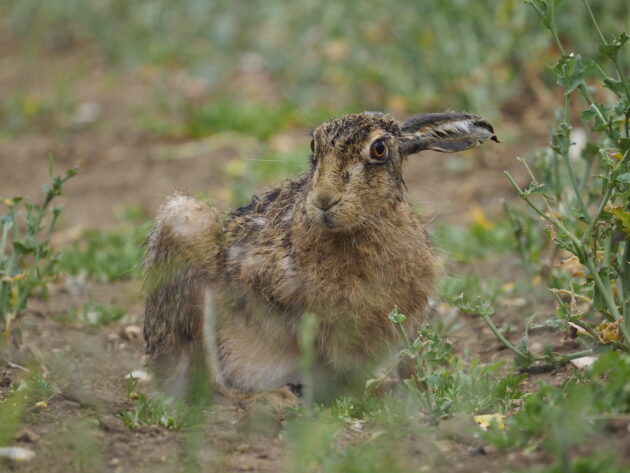
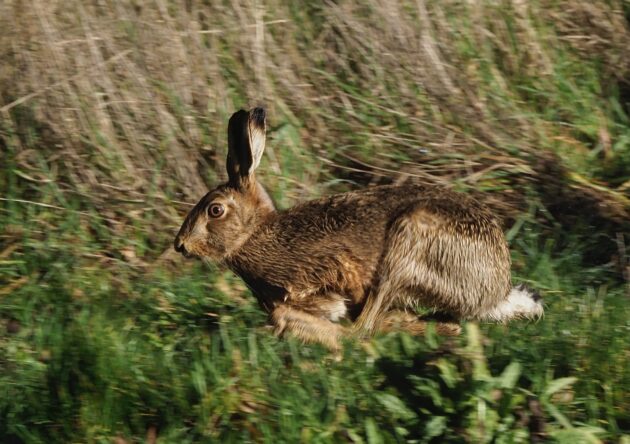
After the Muntjac and Gray Squirrels, the mammal I see most often when birding at home is the Brown Hare. This is an animal that I never tire of pointing my camera at, because they are photographic creatures. Hare taxonomy is confusing, but I have seen Iberian hares in Spain and Portugal, Corsican Hares in Corsica (where else?), and Mountain Hares in Scotland and Scandinavia. The rabbits were surprisingly few near the house, but I didn’t have to go far to see warrens of them, with as many as 30 or 40 in a field.
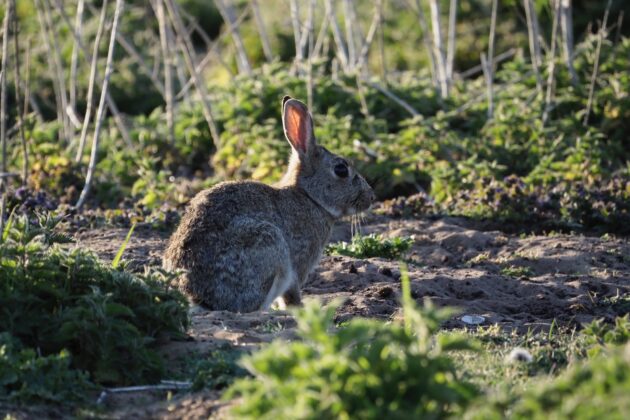
Over the years I have also encountered many different smaller mammals, from Alpine Marmots to European Sousliks, Moles to Hedgehogs, along with various mice and voles. The latter is challenging, because for definitive identification you need to trap them.
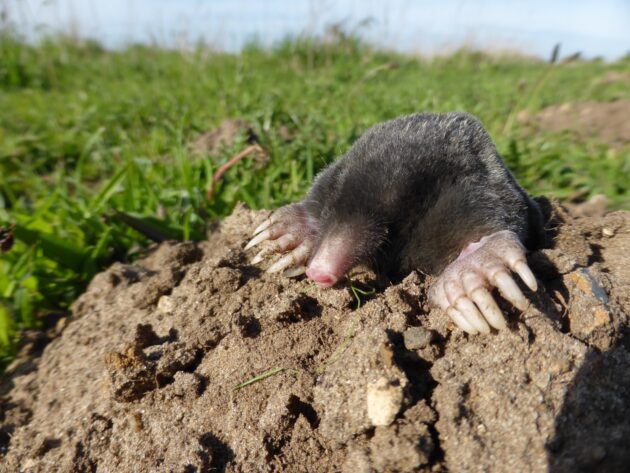
I have seen many bats, but bat identification can be tricky, even armed with a bat detector. Some are easy, like the Egyptian Fruit Bat, the largest bat we have in Europe. I have seen them in Cyprus. At home, I always enjoy seeing Noctule Bats when I go out looking for Nightjars and Woodcock on spring evenings. They are large, impressive bats that fly high. I have never accidentally seen the Greater Noctule, a species that seems to prey on migratory birds it catches on the wing. This does not happen in Britain.
Although birds are my primary interest, encounters with mammals always add interest and sometimes pleasure to any birding excursion. And there are still some mammals that I would like to see, like the Russian flying squirrel found in Finland and Estonia, or the mysterious Pyrenean Desman, which looks like a shrew but is more closely related to the Mole. However, top of my wanted list is a European Lynx. One day, maybe.


